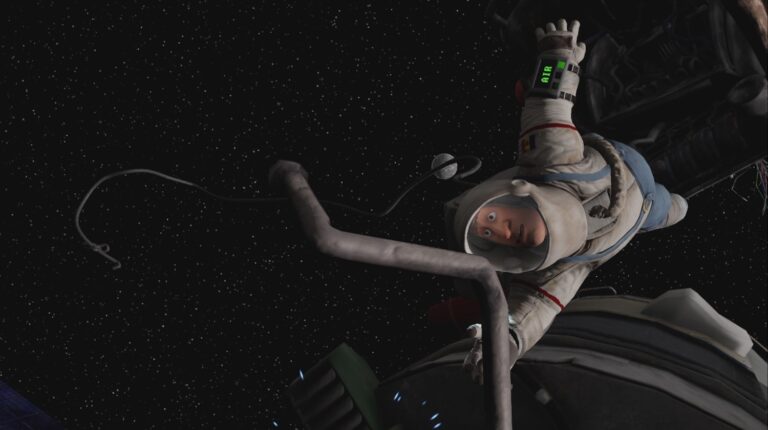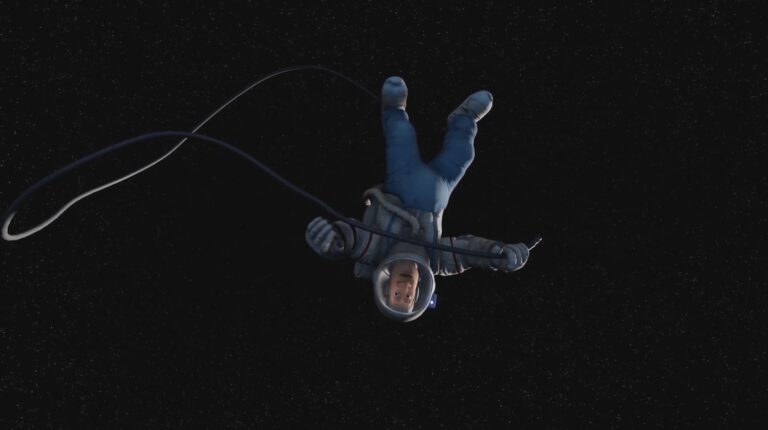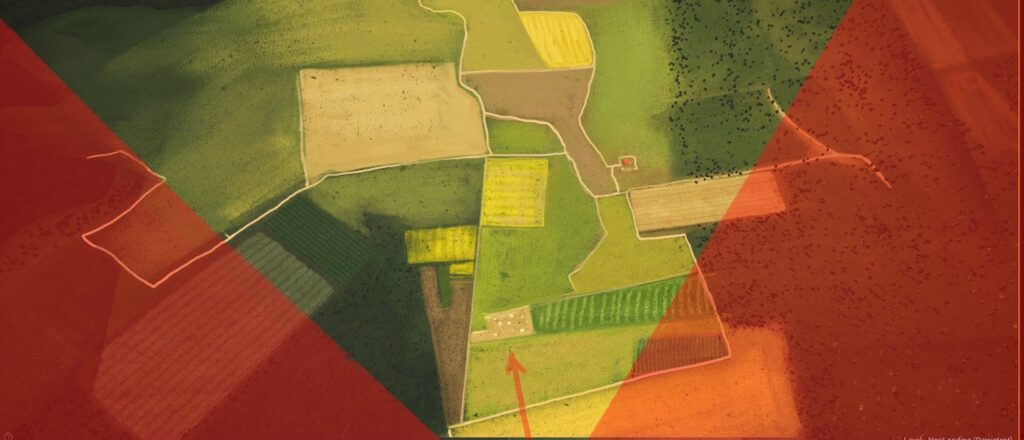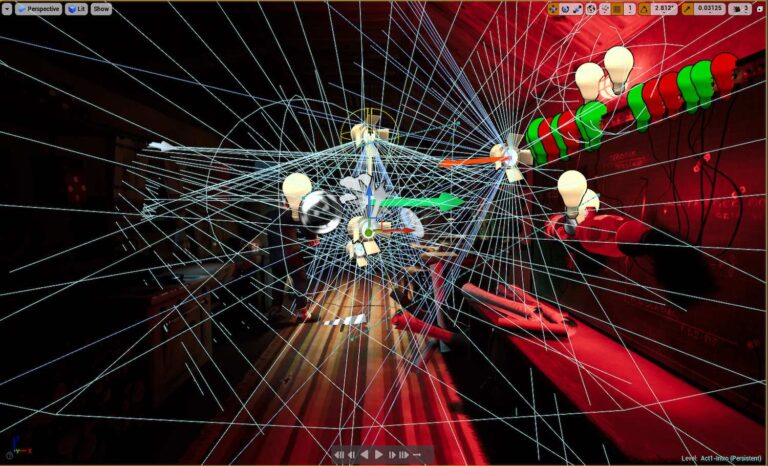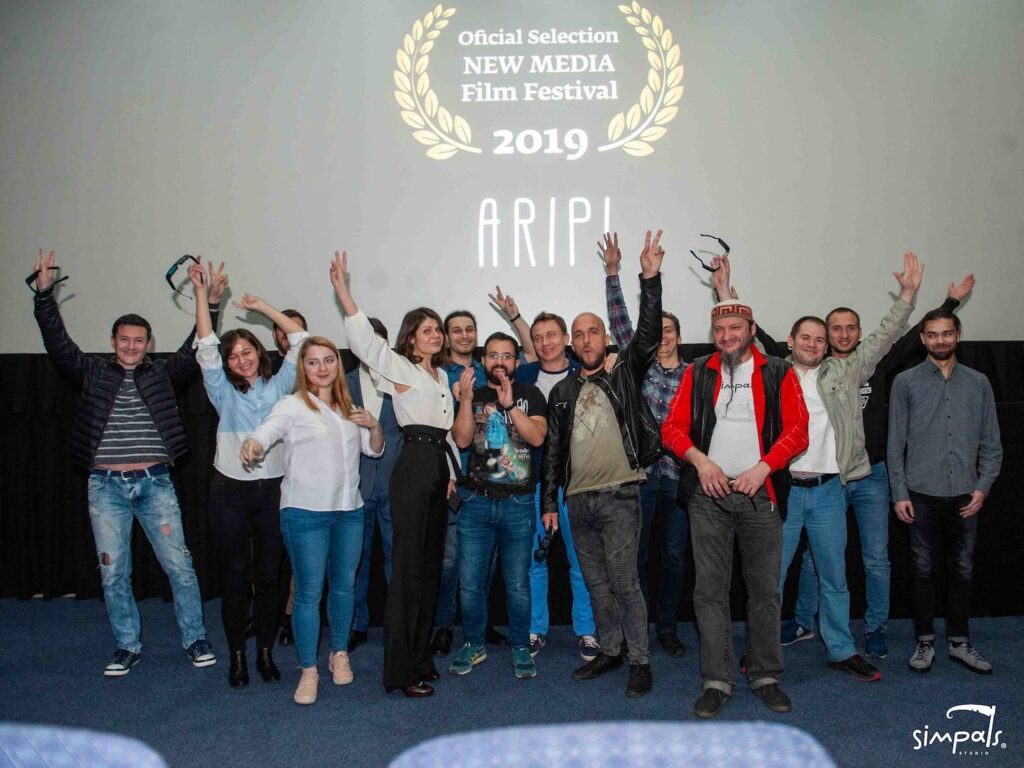Leave the jokes, story and character behind. A serious and fascinating topic is ahead, which requires total commitment. Soon, you shall find out what VR means, how its production differs from filmmaking and how to control the sound in the whole created world.
Virtual Reality is a new method of storytelling. In other words, VR represents a pair of glasses, which you put on and transfer to another world.
Nowadays, people don’t need to make paintings on the cave walls, draw on big canvases, transfer knowledge verbally or take photos, and not even make movies. Today you can just send a person into another world. Immediately. Just give them the VR glasses.
Now, you may not only see a story, but you can live it by immersing into that world. The one who is being told the story isn’t just a listener, reader or viewer, because they see the plot not with their eyes, but with their brain. VR deceives our brain and creates the illusion that we are there, right on the scene.
We started ARIPI project in 2015. At that time, VR technology was a trend. The most famous studios tried working in this field. We decided we can do it, too.
But there was one problem. We knew nothing about VR, so we had to learn all over, because no rule of filmmaking is applicable to this technology. When speaking of the classic filmmaking, the director can create a world and show it to the viewer by using an overall scene, and if the director wants to show a detail, they use the close-up scenes. But in VR, the viewer can turn away and miss the big picture. Let’s put it this way: any film is created by many pieces, but VR doesn’t have frames, shots, scenes, editing. VR is just one big piece, which is not made by other puzzles, but it is “made in one shot”
But there was one problem. We knew nothing about VR, so we had to learn all over, because no rule of filmmaking is applicable to this technology. When speaking of the classic filmmaking, the director can create a world and show it to the viewer by using an overall scene, and if the director wants to show a detail, they use the close-up scenes. But in VR, the viewer can turn away and miss the big picture. Let’s put it this way: any film is created by many pieces, but VR doesn’t have frames, shots, scenes, editing. VR is just one big piece, which is not made by other puzzles, but it is “made in one shot”
VR technology has some features. As mentioned above, in the traditional (2D and 3D) cartoons, the director can control the viewer’s attention by using classical means, but in the VR it is a bit more difficult to do. Well, it’s actually impossible, because there is no editing and the only “camera” is owned by the viewer, which represents their eyes, so it means that where the viewer turns their head, that is what they will see. Consequently, you need new rules, e.g. set the viewer (i.e. the camera) in the center of action, on an imaginary so called “island” and don’t let them blink, because they might miss the whole action. The viewer may step back or forward, but in any case they can’t move far and they must stay in that dimension. Thus, the VR designers ease their work, because they may draw a few 3D objects and the background stays flat (2D).
In ARIPI cartoon we decided to make it different. Our camera travels the world, in all dimensions, turning, spinning, covering thousands of miles. At the point when we are outside the spaceship, the camera flies around on various paths. When the character falls down, the camera and, hence, the viewer, falls down, too. It was hard work to create a balance between the camera speed, character and viewer, for example. If the camera had moved slightly different, at some point, the viewer would feel sick.
The virtual reality peculiarity is that you have only one “camera” and it follows the character, their actions, as well as the main details, all which are present in the cartoon. For instance, we need the viewer to see how the astronaut takes water, then how an issue appears on the spacecraft and how the astronaut discovers it.

We needed to move the viewer’s attention using sound, light and camera turning slightly… The character, the camera and the viewer interact. This balance had to be maintained throughout the whole cartoon. This is what makes VR storytelling so complex.
Cuss part
This is not the segment where everybody cusses, although usually it does happen.
VR cartoon is a complex thing, not only on the behalf of directing and animation. This kind of cartoon is displayed in real time, which means, the scene has to be processed here and now. When the viewer shakes the head in all directions, looks around, looks closely to details, the computer has to calculate all data immediately and to show a pleasing-to-the-eye image. I intentionally wrote the word “pleasing”, because our brain doesn’t like slow processes: if it sees less than 30-45 frames per second, the images will slow down: the eyes see fake things, the image is twitching, some artefacts come out. In short, in this case the video reminds a YouTube clip watched on slow speed internet.
Scanning the world
Another detail: the human being has two eyes, therefore, the computer has to be able to show over 90 frames per second. Now I’ll try to explain in a very simple way for those who do not understand how it all works. The computer uses the data provided by IT specialists and processes them with the help of the processor and video card, thus displays an image. The more powerful the machine, the faster the image is processed. It’s very simple. But we set the aim that our cartoon could be processed on an average gaming computer. For this reason, each object of the ARIPI cartoon had a “bumpy ride” till the finish line.

When it seemed we had a cool idea and we had only to transform it into an animated movie, the VR specialists came in and said just one word “FPS” (frames per second).
This means that the objects we wanted to add were so complex that the computer would process all of them way too long and the image would twitch. Therefore, we worked very carefully with each object, its shadow and surface, and we “polished” it all so the viewer would not notice the slowdown and the computer could easily calculate the data.
For example, we really wanted that the clouds would look real. We studied this matter from cover to cover, starting with the height, at which the clouds are formed, and ending with what processes take place inside the clouds. We decided which type of clouds we will use and we started working on that, but it turned out that the clouds are processed very slowly and the image starts flashing.
We had some difficulties when designing the Earth. We wanted that our home planet, which the hero misses so much, would look real: that the viewers could see the continents and the light and night side of our planet under the spaceship, depending on Sun position. We even planned to draw the shadows of the clouds as they “run” on the planet. Well, the paperwork and the designing plans looked amazing.
We made our first sketch and understood that we should drop this idea, because all of this multi-layered “game” with a lot of objects just slowed down the engine, and so the amount of frames per second could be counted on the fingers of only one hand. Then we decided to “support” the idea of a flat planet; so our artists designed one big picture with the landforms of the Earth and other necessary things. As a result, the computer had to process only one image and not thousands. I can only add that it came out even better than we planned.
Another pain in the neck was the light sources in the scenes. Simply speaking, any addition of these sources was lying heavy on the data processing speed. Therefore, the team was forced to use the Jenga principles. First, we had to set out all the light sources, so everything will be highlighted as planned. Secondly, we had to eliminate an exact amount of sources, so the image could render quickly and the light could correspond to our design.
Generally speaking, the creation of VR cartoons balances between computer resources, which are necessary for the implementation of the idea, and what we “fantasized”. Any imbalance turnes the VR cartoon into something weird.
By the way, even if the virtual reality looks very realistic, our brain is smart enough to unveil the truth. If the viewer and the camera are moving too fast in the virtual world, the viewer may feel sick. The brain sees the inconsistency between the usual things and the action that is taking place in the scene and starts panicking.
Sound
A cartoon without soundtracks loses the best half of its fascination. Regardless of the image quality, the music and the sound help immerse deeper into the action. At the core of other Simpals animated movies was the cheerful music, which helped elevate the mood, which we were guided by when editing them and which we “hated” at the premiere. The music was just one soundtrack, which was recorded separately and played throughout the whole cartoon. This happened in all of our cartoons, starting with the first ones, in which the soundtrack was recorded by Zdob si Zdub, and ending with Dji Death Sails.
In ARIPI we decided to go another way: we weren’t looking for the appropriate soundtrack, but we started working with a composer who could express the action in music notes.
By the way, we also used the silence. At some moments, when we wanted to show the hero’s loneliness and low mood, we learned that the music could not convey the full range of emotions. Therefore, the silence was a great instrument to reflect his feelings. Only the inter-sounds were left. The inter-sounds represent the noise which imitate the environment. For example, the noise of the leaking water in the sink, the rustle of the slippers, some squeaks and rattles.
This type of inter-sounds were present throughout the cartoon. Each noise was recorded separately for each element. First, we recorded the sounds of the objects, then we added the music, so all together would sound harmonious. Simply speaking, the viewer had to understand what was happening on the spacecraft just by hearing the noise and having eyes closed.
Premiere
Basically, at this stage we could close the production. But we had a purpose when we created this cartoon! After all, the cartoon is about the cosmos, therefore we decided to launch the cartoon on April 12: on the International Cosmonautics Day.
Even though the team was very tired, we had to accelerate the process in order to make it in time. So we did it! On April 12, the ARIPI premiere was launched in the Patria cinema. We have worked on this project for three years.
I want to say a GREAT thank you to the team which worked on this project. In the list below are included not just people, but the Giants of cartoon industry.
So we launched the cartoon about the Moldovan astronaut, but honestly, if considering the VR technologies, all the team was out in space. Therefore, meet Moldovan astronauts:
Produced & directed by: Dmitri Voloshin
CG Supervisor: Sergiu Chirillov
Project manager: Ana Volosinovici
Story: Dmitri Voloshin, Anastasia Berzoy, Sergiu Chirillov
Composer: Elias Tadeus
Art Director: Dmitri Travnicov
Storyboard & 2D animatic: Serdar Djumaev, Alexandra Graur
Lead Storyboard & 2D animatic: Constantin Fana
Concept art & Character design: Serdar Djumaev, Dmitrii Travnicov, Tatiana Ketryan, Iulia Zaharova
Modelling & Texturing: Iulia Zaharova, Vladimir Taucci, Andrei Shimbariov, Alexandru Grebencea
Rigging: Valentin Nacu, Eugene Izmailov, Andrei Orehov
Lead animation: Constantin Fana
Animation: Alexandr Pihut, Evghenii Cernisev, Sergiu Badragan, Valentin Nacu, Eugene Izmailov, Iurie Cecoi, Lesya Kunitkaia
VR engineer: Alexandru Slobozian, Maxim Babanu, Evgheni Feldman
VFX: Ghennadi Dochien
CG Generalist: Alexandr Matievschi, Maxim Baraliuc
Graphic designer: Olga Babanu, Anna Brescher
Look development: Dmitrii Travnicov
Editing: Maxim Baraliuc, Constantin Fana, Alexandr Matievschi
Music editor: Elias Tadeus
Music & SFX mixer: Elias Tadeus
SFX editor: Alexandru Tofan
Voice dubbing: Alexandru Tofan, Dmitri Voloshin
Technical support: Serghei Logvinenco, Pavel Botnari
Chief of staff: Ana Volosinovici
Social media manager: Dmitri Iordachi
Public relation: Anna Scheglova
Corporate council: Dorian Doronceanu
Special thanks: Andrei Matcovschi, Roman Stirbu, Macar Severin, Artur Bizgu, Vali Boghean
. . .
Now, as Gagarin would say if he were born in Moldova: “Mergem” to festivals!






